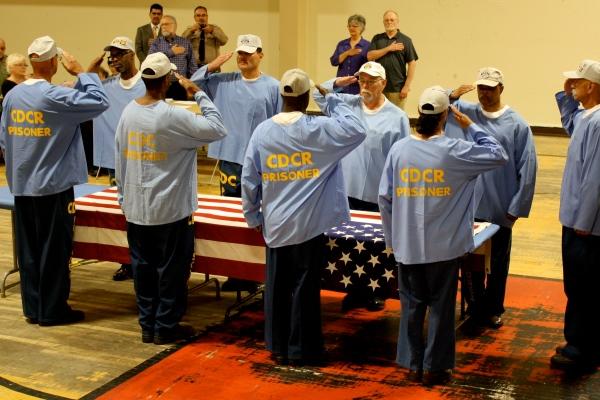Veterans account for fewer inmates in US prisons and jails today than a decade ago, according to new federal statistics.
An estimated 181,500 veterans are incarcerated, including 131,500 in prison and 50,000 in jails, the Justice Department's Bureau of Justice Statistics said in a release this week. That figure is down 9 percent from the 206,500 veterans locked up in 2004.
Overall, veterans represented about 8 percent of all federal and state inmates. The figures are based on a 2011-2012 survey conducted by the department.
"This decrease has been happening for a while," John Rowan, president of Vietnam Veterans of America, told Military.com. A growing number of so-called veterans courts emphasize treatment over incarceration for those with drug problems, he said.
"Vet courts have done a great job of keeping vets out of jail and the population [of those incarcerated] is shrinking," Rowan said. Also contributing to the decline is the fact many Vietnam veterans have been paroled or died while in jail, which has led to his organization closing a number of prison chapters, he said.
Veterans doing time are more likely to be white, older and more educated yet more violent than their non-veteran counterparts, according to the figures.
They're also more likely to have a mental health disorder or post-traumatic stress disorder. More than half, or 55 percent, of imprisoned veterans told department researchers they'd been told they had a mental health disorder at some time, compared to 43 percent of non-vets. What's more, veteran prisoners were twice as likely as non-vets to have been told they suffered post-traumatic stress disorder -- 23 percent compared to 11 percent. Similar differences were found in the jailed populations.
A higher percentage of veterans have been convicted of a violent offense than nonveteran prisoners -- 64 percent compared to 52 percent -- even though veterans have relatively fewer prior arrests.
About 12 percent of veteran inmates were in prison for property crimes; 14 percent for drug offenses; and 3 percent for driving under the influence or driving while intoxicated. Non-veterans imprisoned for the same offenses represented 17 percent, 19 percent and 4 percent, respectively.
In terms of demographics, 50 percent of vets in prison and 44 percent of those in jails are white, as opposed to 27 percent and 31 percent non-white veterans, respectively.
The bureau also found the average age of veterans in prison was 49 years old, compared to 37 years old for non-veterans. In jails, the figure was 43 years old -- more than a decade older than nonveterans.
Incarcerated veterans had more years of formal education than nonveterans, according to the department. Some 20 percent of veteran prison inmates and 18 percent of those in jail held at least a college degree, as compared to just 5 percent of non-veterans in both prisons and jails.
--Bryant Jordan can be reached at bryant.jordan@military.com. Follow him on Twitter at @bryantjordan.



























